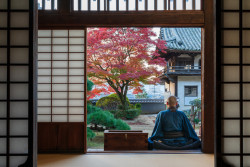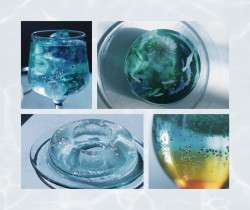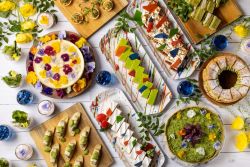
December 11, 2009
Kiyokata’s Nostalgia
Originally published on metropolis.co.jp on December 2009 The first key to success in life is getting into the right business at the right time. This was certainly not the case for Kiyokata Kaburaki, who set out to become a traditional Japanese painter in a period when the nation was agog with Western art, culture and […]
By Metropolis
Originally published on metropolis.co.jp on December 2009

Spring Snowfall, Kaburaki Kiyokata, 1946, Suntory Museum of Art
©Akio Nemoto & JAA 2009
The first key to success in life is getting into the right business at the right time. This was certainly not the case for Kiyokata Kaburaki, who set out to become a traditional Japanese painter in a period when the nation was agog with Western art, culture and fashions. Along with a few likeminded artists, Kaburaki founded a group dedicated to reviving traditional bijinga (pictures of beautiful ladies). Luckily, the second key to success is perseverance. Sticking to his guns, Kaburaki continued to produce his idealized depictions of kimono-clad, Edo-period women. These contrasted with the brash new type of woman emerging in the Taisho and Showa periods (the financially and emotionally independent moga, with her bob cut and cigarette) and gradually gained popularity. Featuring excellent examples of his bijinga and fuzoku-ga (genre paintings), Kiyokata’s Nostalgia at the Suntory Museum of Art presents a pleasing selection of Kaburaki’s wistful and tender works.
Suntory Museum of Art
Kiyokata’s Nostalgia: Kiyokata Kaburaki, A Painter Who Loved the Quintessence of Edo. Until Jan 11, free (MS and under)/¥1,000 (HS, univ)/¥1,300 (adult). 9-7-4 Akasaka, Minato-ku. Tel: 03-3479-8600. Open Wed-Sat 10am-8pm, Sun-Mon & hols 10am-6pm, closed Tue. Nearest stn: Roppongi. www.suntory.com/culture-sports/sma







